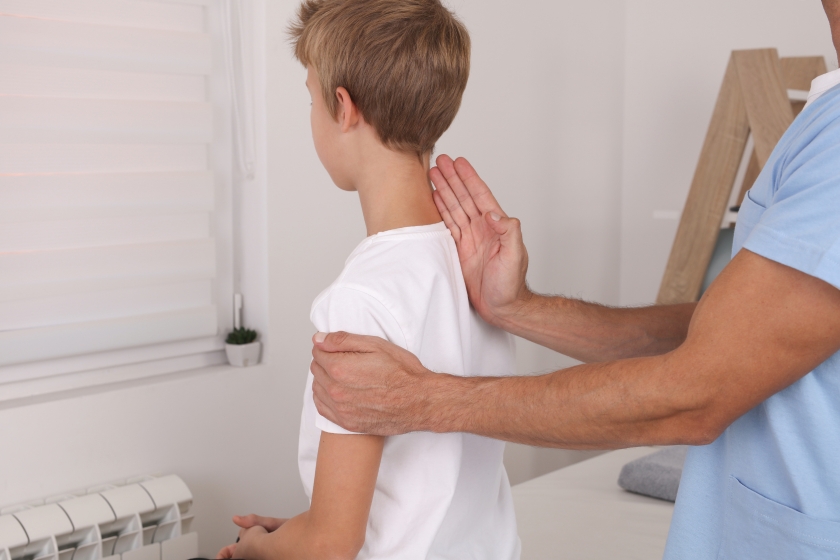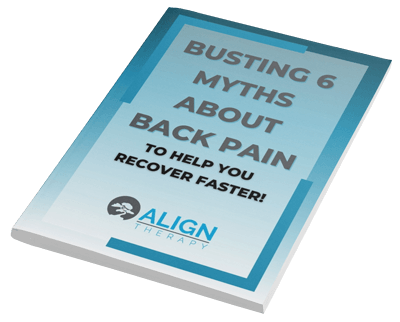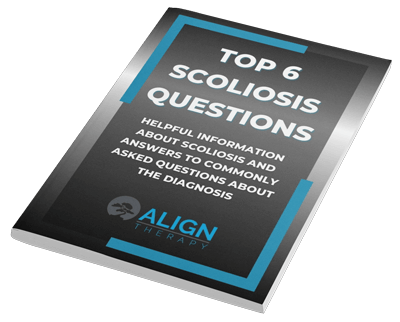If you’re the parent of a child who’s recently been diagnosed with scoliosis, you’re probably feeling overwhelmed—and maybe a little confused. One of the most common things parents hear from their pediatrician or orthopedic doctor is: “Let’s wait and see if it gets worse.”
This advice might sound reasonable at first—after all, your child isn’t in pain, the curve doesn’t look too bad, and growth seems to be going just fine. But as someone who has treated scoliosis since 2014, I want to tell you something very clearly:
“Wait and see” is not a treatment plan. It’s doing nothing.
And when it comes to scoliosis—especially in growing kids—doing nothing is often what allows the curve to worsen.
Why I’m So Passionate About This
I’ve been a scoliosis specialist for over a decade and founded Align Therapy specifically to help kids and adults get proactive, personalized treatment that actually works. I’m certified in scoliosis treatment through multiple international programs, including the Schroth Method and the SEAS approach. I’ve even been invited into SOSORT, the leading international scoliosis research society.
Why does that matter? Because I take this seriously. I’ve made it my mission to ensure our clinic uses methods that are backed by research, not outdated practices or guesswork.
That’s why I get fired up when I hear that a kid with a clear scoliosis diagnosis has been told to “just watch it and see what happens.” In my experience, this passive approach often leads to preventable problems—and missed opportunities to help kids feel better, move better, and avoid unnecessary treatment later on.

What Is Scoliosis, Really?
Scoliosis is more than just a curved spine. It’s a three-dimensional condition that involves a sideways curve, spinal rotation, and often a flattening of the natural curves of the spine. From the front or back, the spine should look straight. But in scoliosis, it curves—sometimes in an “S” or “C” shape—and the ribs and shoulders often shift and rotate along with it.
It most commonly shows up during adolescence (ages 10–18), especially during growth spurts. That’s when the spine is most vulnerable to progression. Pediatricians often screen for it around this time, but unfortunately, they don’t always know what to do beyond referring out—or suggesting “wait and see.”
The tricky part? In most cases (about 80%), we don’t know exactly what causes scoliosis. It’s called “idiopathic,” meaning unknown cause. But there’s often a genetic link. I regularly see parents in my clinic who had scoliosis themselves or have a close relative who did.
Growth: Friend or Foe?
One of the most important concepts to understand about scoliosis is the role of growth. Curves tend to progress most rapidly during times of fast growth—especially puberty. That’s why we track skeletal maturity using tools like the Risser scale or Sanders scale, which tell us how much growing a child has left.
Here’s where it gets interesting: Growth is not the enemy—unless we ignore it. When used correctly, growth is actually a powerful tool in scoliosis treatment.
Treatments like scoliosis-specific exercise and bracing work with growth to reshape and guide the spine. For example, when a brace is applied properly, it reduces pressure on the inner part of the curve (the concave side), allowing it to grow more evenly. That can prevent worsening, or even reduce the curve.
But if we don’t act during this window of opportunity? That curve can get worse—and quickly.

Why Doing Nothing Rarely Works
It’s true that not every curve progresses. Some small curves stay small. But many don’t. And the problem is, you don’t know which one your child has until it’s too late.
By the time a curve hits 45–50 degrees, surgery is often on the table. I’ve had many patients come to me after years of “monitoring” with no action taken—only to find out they’re now in surgical range and out of time.
Even curves in the 30–40 degree range can lead to long-term issues like back pain, poor posture, decreased lung function, and emotional distress due to visible asymmetry. And once your child is done growing, the options for changing the curve are much more limited.
In fact, research suggests that keeping the curve under 30 degrees during adolescence results in better outcomes as adults—less pain, fewer cosmetic concerns, and a lower chance of needing surgery later in life.
So What Can Be Done?
Here’s the good news: There’s a lot that can be done for scoliosis. And we break it down into three evidence-based options:
1. Scoliosis-Specific Exercise
This is where our clinic shines. We use advanced, research-supported programs like the Schroth Method and SEAS approach. These aren’t your typical physical therapy stretches or strength training. They are targeted, asymmetrical exercises designed to correct your child’s unique curve and train the body to hold better alignment.
The best part? These exercises empower kids and teens to take control of their condition. I’ve seen confidence skyrocket when a teen starts to understand their spine and feels the difference in their posture and comfort. It’s no longer something that’s just happening to them—they’re actively managing it.
2. Bracing
For moderate curves (typically 25–40 degrees), a custom brace can make a huge difference. When worn as prescribed (usually 16–20 hours a day), it can slow or stop the curve’s progression and help avoid surgery. And brace technology has come a long way—there are more comfortable, less bulky options available, and even 3D printed braces on the horizon.
3. Surgery
Surgery is a last resort, but sometimes necessary for severe or rapidly progressing curves. There are newer options like vertebral body tethering that use growth modulation principles, but these still come with risks and are only appropriate in certain cases. If we can prevent surgery through early intervention, that’s always our goal.

Real Stories, Real Results
I’ve seen patients go from a 34-degree curve to 24 degrees after consistent scoliosis-specific exercise and bracing. I’ve watched kids walk taller, breathe easier, and feel more confident in their bodies.
But the key to these outcomes? Starting early. Not waiting. Not hoping it goes away on its own.
The truth is, I’d rather treat a child and have it turn out they didn’t need intensive intervention than look back and wish we’d done more before the curve worsened.
Don’t Wait. Get Answers.
If your child has been diagnosed with scoliosis—or you’ve just noticed uneven shoulders, ribs, or waistline—it’s time to stop wondering and start acting.
👉 We offer a free consultation at Align Therapy to assess your child’s posture, movement, and growth potential, and help you understand what’s really going on—and what can be done.
You don’t have to go through this alone. And you definitely don’t have to settle for “wait and see.”
Let’s work together to give your child the best possible future—strong and standing tall. Click here or call (801) 980-0860 to book your free visit!
—David Butler, Physical Therapist
More Free Resources:
Read our blog – Discover the Benefits of Physical Therapy for Managing Adult Scoliosis – Align Therapy Clinic, Utah
Check out what others are saying – Google Reviews
Learn more about us – Meet the Team



